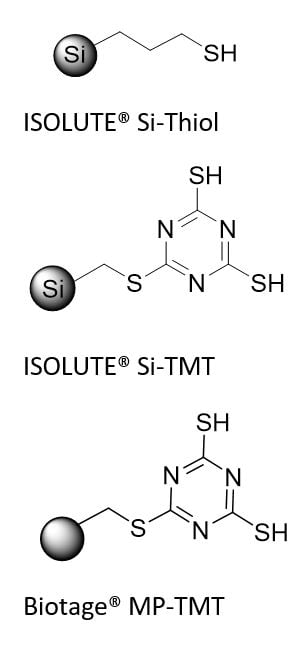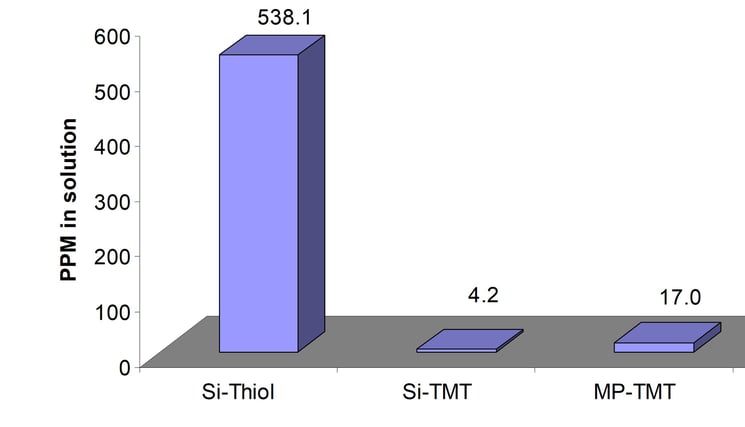Once a chemist has seen and understands potential for the application of metal scavenging and reduction of classical iterative metal migration steps, the next question we receive usually relates to how best to apply them to a reaction.
In today’s post, we discuss an excellent question we receive that relate to the loading capacity of a metal scavenger. Since metal scavenging is all about saving time, being more efficient, and hitting hard to reach purity goals, more is better, right?
To simplify things, I draw some parallels from the automotive industry. A larger capacity engine does not necessarily mean a faster car. More likely, the output horsepower is the influential factor, so we need to be thinking about efficiency more than simple paper specifications. But we also know that a small car with larger horsepower can be beaten by a larger car with a less efficient engine and lower horsepower, so even this is not always clear-cut analogy..
In the case of scavenging, to a point, loading capacity is like engine capacity but it is the ligand type (horsepower), that releases further efficiencies in metal scavenging. Each scavenger has its time and its place, regardless of chemistry and prowess. The trick is knowing which one to use, and when.
To show this, we compared the Biotage® MP-TMT (loading 0.6 mmol/g), ISOLUTE® Si-TMT (loading 0.3 mmol/g) and ISOLUTE® Si-Thiol (loading 1.3 mmol/g) in some simple screening type experiments. All of these scavengers are excellent for the removal of transition metals, but removing palladium is by far the most common application.

A 1000 ppm stock solution of dichlorobis(DPP)ferrocene Palladium in THF/DMF (9/1) was made up and portioned. A series of scavenger fixed beds were created, consisting of 500 mg in a simple 3-mL polypropylene SPE style cartridge. Stock standard palladium solution (1000 ppm) was added to the tubes and allowed to flow through by gravity.
Then, additional clean solvent was added to wash remaining solution through (2-3 bed volumes). The eluant was then evaporated and analyzed for palladium content, Figure 1. [Some people like to equilibrate a cartridge first, this will help to remove air spaces within the media and stabilize the gravity flow when a solution is first added to the scavenger, but if there is a lot of sample, or conversely, a lot of scavenger to pass through, the chance of minute voids impacting this type of adsorption process is really quite small, and it’s not a huge risk to skip equilibration].
In our experience, palladium in dppf is actually a reasonably difficult metal to scavenge, so this test was not by any means ‘model’ or an easy task.

Figure 1: Palladium remaining in solution after one treatment with metal scavenger of 1000 ppm Pd stock solution.
Si-Thiol did a reasonably good job resulting in ~50% scavenging under these challenging conditions, but it is clear that even the highest loading capacity (1.3 mmol/g), the nature of the system made Si-Thiol only a fair choice of scavenger. Both TMT media, although with lower capacity than the Si-Thiol, performed better due to their chemistry’s binding preference for Pd.
They were able to reduce the palladium content of the stock solution from 1000 ppm to the pretty low sub-20 ppm level. At this stage, I’m not going to be splitting hairs about the difference between a resin-TMT and a silica-TMT (there is another blog in the series planned for that). Suffice it to say that there is more to our automotive car analogy at play here. Having the horsepower is not helpful if you cannot put that power down on the road and get traction. MP-TMT has much larger particles (150-300 micron in general) than Si-TMT (approx. 50 micron), so it would pack less well in a small SPE column, (therefore a few ppm difference is to be expected in a simple experiment such as this) but the reality is that they all did a sterling job considering this difficult catalyst, due to the more powerful attraction of the TMT ligand to the palladium.
So, arbitrarily comparing ‘paper’ loading capacity for metal scavengers is not the most effective way to work. More efficient scavengers are also not needed in such high quantities. I advocate a screening approach), so the best candidate can come to light based on technical and then process economics. Scavengers such as Si-Thiol are excellent work-horses, and used in the majority of large scale applications, but where a system is more challenging, or in case a high level of future process robustness is desired (or variability of input solution), high performance metal scavengers such as MP-TMT and Si-TMT have proven themselves again and again to be the most efficient choice for processes at large scale.
Read our previous blog post to learn more, just follow the link below!

